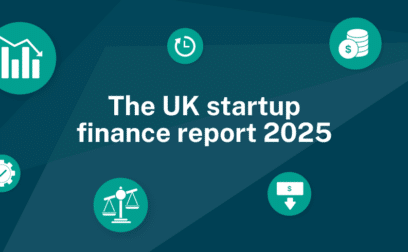A bridging loan is similar to a mortgage and is used by individuals and businesses to purchase or raise capital secured against either a residential and/or commercial property or a land asset. Unlike a traditional commercial mortgage, execution and drawdown happens much faster. The loan may be raised against a property for which a traditional mortgage may not be suitable and in certain cases where the applicant has no income.
How does bridging finance work?
The major difference between a mortgage and a bridging loan is that while a traditional mortgage lender will focus on the ability of the applicant to maintain payments on the loan, a bridging lender focuses more on the property and its suitability as security. When a bridging loan is approved most lenders will build in an interest reserve facility which allows them to take payment on the loan over the term without committing the borrower to make a monthly payment.
This provides the lender with the surety that the interest will be paid on time and provides the borrower with the comfort they don’t need to make payments that may be impossible due to cashflow constraints.
The priority for bridging lenders is the exit strategy as this is how they will get repaid: the key question for the lender is: “What will change during the term of the loan to allow the borrower to repay the loan?” Usually this means that bridging loan exits are via re-mortgage to a conventional lender or sale of the property utilised as security.
When should I use a bridging loan?
A very common misconception is that bridging loans are only used when purchasing property at auctions or when buying a new property before you have sold another property. Whilst this type of facility can be used for these purposes, they can also be utilised in other scenarios too as we will see below.
A bridging loan may be used to purchase a property that requires light or heavy refurbishment and is therefore not suitable for a traditional mortgage.
It may also be used as a non-status commercial mortgage, where a business has been suffering financial difficulties and their existing lender will not lend any more funds or reschedule their existing payments.
For businesses that have ceased trading and are waiting to sell a property or premises, a bridging loan offers a solution in circumstances where a traditional commercial bank will struggle to demonstrate the loan can be serviced and will often ask the borrower to repay the loan prior to the property sale.
How much does bridging finance cost?
Bridging loan costs vary dramatically depending upon the security type, the term of the loan and the credentials of the borrower with rates varying from four percent per annum to 18 percent per annum. Arrangement fees can also vary from one percent to three percent. While values may be up to 90 percent for some property types.
For example, the cost of bridging loan on a piece of land would be much higher than the equivalent loan secured against a typical family home in an established residential area.
The final cost of a bridging loan depends on you or your broker having access to the full market so that you are able to secure the best available deal.
Do I need a broker?
The short answer is usually, “yes”. There are a large number of bridging lenders across the UK and due to the complexity of the process, most of them are set up to work alongside finance brokers.
The finance brokers run the process to take ownership of the relationship between borrower, solicitor, lender and other professionals involved ensuring a smooth journey to completion.
Is my business eligible for bridging finance?
Any individual, partnership or company may obtain a bridging loan if they are the owners or the intended purchasers of a property that is considered suitable security by a lender.
Any ultimate beneficial owner of a borrowing company or any individual must be at least 18 years of age.
Do banks provide bridging finance?
Traditional banks such as The Big Four and household names are not usually the best option for those seeking bridging loans as these traditional lenders focus more on the borrower and their credentials rather than the property, when analysing a proposal.
Some smaller banks offer bridging loans, but they are typically more stringent in their underwriting approach, require more borrower due diligence and are typically slower to transact. The rates and fees from these smaller banks are, however, typically lower than traditional specialist bridging lenders and are worth considering. A knowledgeable and professional broker will guide you through the market to disclose the options that are available to you. Get in touch and speak to one of our experienced Commercial Finance Managers.
How long can I use a bridging loan for?
Bridging loans are seen by many as a short-term solution, though the loan terms may run from one month to up to three or more years. As borrowers will save interest and maintenance fees by exiting quickly, there is pressure for the loans to be repaid as quickly as possible.
Most bridging lenders are keen to be repaid as quickly as possible and re-circulate their funds by supporting another borrower, so most do not charge redemption fees which provides flexibility to the borrower. However, there are lenders who provide ‘open ended bridging loans’ which means they have no fixed term and it is up to the borrower how and when they repay the bridging loan.
If I have bad credit, can I still get bridging finance?
As the focus is on the property rather than the lender, bridging loans are often available to people for whom other borrowing is not an option or too expensive. So long as the lender is satisfied with the ultimate exit strategy and repayment of the loan, personal credit scores will be less important.
If the loan exit is via re-mortgage, then the lender will want that borrower or their credit broker to prove that a viable re-mortgage is or will be available.
Some lenders only want to deal with prime borrowers with exemplary credit ratings where others actively prefer to deal with borrowers who have suffered difficulties managing credit relationships. Again, this shows the benefit of working with a broker who knows and understands the market and can point would-be borrowers to the right lender.
As with most borrowing, the track record of the borrower will affect the interest rate and fees offered on bridging loans, though some lenders offer a ‘valuation only’ product where their primary concern is the property value and detail within the legal conveyance pack.
In this scenario the only borrower caveat is that they do not have a criminal record or are currently being investigated for any form of fraud.
What are the alternatives to bridging finance?
Secured Loans
If you’re considering raising funds through a second charge loan, secured loans could be your ideal solution. These loans are secured against property, often resulting in lower interest rates compared to bridging loans. However, keep in mind that the maximum borrowing amount might be influenced by the equity you hold in your property.
Property Development Finance
Property developers will find property development finance to be a dedicated option. Crafted to cater to the needs of property development projects, this financing route is designed to provide the necessary resources to bring your development visions to life.
Commercial Mortgages
For those dealing with commercial properties, commercial mortgages step in as a suitable choice. You can opt for fixed or variable rates, providing flexibility in alignment with your financial strategy and market conditions.
Family Loans or Personal Savings
While borrowing money from family or utilizing personal savings may work well for smaller purchases such as cars or paying off credit card debts, it’s less feasible for larger investments like residential or commercial properties. Assess the scale of your property venture before considering this route.
Personal Loans
When you’re in need of smaller amounts, personal loans can be a viable option. However, it’s worth noting that personal loans might not be the most suitable choice for larger sums, particularly exceeding £20,000. Additionally, personal loans usually involve minimal to no lender arrangement fees.
When would you choose bridging finance over a commercial mortgage?
Opting for bridging finance over a commercial mortgage typically occurs in scenarios that require immediate funds and swift property acquisition:
Urgency and speed: Bridging finance suits situations where speed is paramount. For instance, when you need to secure a property swiftly, such as in auctions or time-sensitive deals, bridging loans offer quick access to funds, unlike the lengthier approval process of a commercial mortgage.
Temporary financing: When you anticipate a short-term financial need—like awaiting the sale of another property to fund a purchase—bridging finance provides temporary financing for up to 12-18 months. This short-term nature contrasts with the long-term commitment of a commercial mortgage.
Flexibility in property types: Bridging loans can be more flexible regarding property conditions or types. They might accommodate properties that don’t meet the criteria of traditional lenders for a commercial mortgage, allowing for the purchase of properties needing renovation or unconventional conversions.
Immediate investment opportunities: When an opportunity arises that requires immediate investment, like securing a property with the potential for high returns, bridging finance enables quick action. It allows you to seize time-sensitive investment prospects that might not be feasible with a commercial mortgage’s longer processing time.
How can I learn more about my options?
Swoop has a dedicated team of Commercial Finance experts with over 100 years of experience between them – get in touch to see how they can help.

Ed Brown
Commercial Finance Manager
A professional in the financial services sector, Ed has over 20 years’ experience in the secured debt and mortgage market. Ed has worked exclusively as a commercial finance broker since 2018, using his broad range of experience, knowledge and skills to help and support all types of clients. His calm and methodical approach is a real asset to borrowers who need to access and navigate the increasingly complex commercial mortgage market. He embraces the role technology plays in the debt market and is focused on combining the power of the Swoop platform to benefit clients and introducers alike. Ed can work with any SME or property professional to provide market leading debt finance solutions, from first time buyers to experienced regional operators.
Common bridging finance FAQs
When you secure a bridging loan, your property is subject to a ‘charge’ by the lender. This means that if you’re unable to repay the loan, they’ll recover their funds from the sale of your property.
In cases where there are no pre-existing loans tied to the property (such as when you own it outright), this is known as a ‘first charge’ bridging loan. Consequently, if you were unable to meet the loan repayment and your property was sold to settle the debt, the bridging loan lender would be the first in line to receive their repayment.
On the other hand, if there are one or more existing loans already secured against the property, like a mortgage, it becomes a ‘second charge’ bridging loan. In this scenario, should you struggle to repay the bridging loan and your property is sold to cover the debt, the bridging loan lender would receive their repayment only after your mortgage provider has received theirs.
Typically, second charge loans come with higher costs, reflecting the increased risk for the second charge lender in recovering their funds if you face difficulties with repayments. Furthermore, obtaining a second charge loan would necessitate consent from the first charge lender, which is usually your mortgage provider.
Yes, a valuation is typically required for a bridging loan. It helps determine the value of the property used as collateral for the loan.
With bridging finance, you can borrow up to £25million, capped at 80% LTV (loan to value).
Yes, a deposit is essential for a bridging loan when this facility type is being used to support the purchase of property. It provides a security buffer for the lender. The value of this deposit is typically between 20-40% depending on the lender’s appetite.
100% finance for property acquisitions using a bridging loan is possible, however, the lender will require additional security in the form of another property.
The longest term for a bridging loan is 36 months (3 years). However, some lenders may offer extensions or bespoke arrangements based on specific circumstances.
Yes, a bridging loan can be used for a buy-to-let property. It’s a common financing option for property investors looking to acquire or refurbish rental properties quickly. Keep in mind that lenders may have specific criteria and terms for using bridging loans for buy-to-let purposes.
While bridging loans tend to be processed faster than mortgages, the timeframe for completion can range from a few days to several weeks. This is attributed to the fact that a bridging loan is a secured loan. When using your property as collateral, a valuation is typically required, in addition to credit checks and a thorough review of the legal titles of any property a lender is taking as security. The complexity of the transaction and efficiency of involved parties, like solicitors and surveyors, can also influence the timeline.
Yes, a bridging loan can be used to cover fees such as stamp duty. It can provide the necessary funds to cover various costs associated with property transactions, including stamp duty, legal fees, and other related expenses, subject to the lender’s maximum LTV not being exceeded.


































 yet? Register here!
yet? Register here!